Over 1,000 years ago, Leif Eriksson left Greenland and sailed west where he landed on the northern peninsula of Newfoundland. There he set up a base camp from which they could explore the area further south, some feel as far south as New Brunswick looking for hardwood, furs and grapes for wine. They built turf walled buildings that served as over-wintering quarters with houses for all the crew, a forge, storage for supplies, rooms for women and servants. They used this site for perhaps 20 years but burned it down and went back to Greenland when they couldn’t afford the expense of this settlement. Fast forward to 1960 when interest was high in discovering if the Vikings arrived before Columbus. An archeologist had read the sagas and knew there had to be a settlement site somewhere on North America. When he visited NF he talked with a local fisherman who told him about the Indian ruins. A short time later he found some small artifacts that proved the Norse had lived here. We call them Vikings but that term applies to Norsemen on a raiding expedition.
L’Anse aux Meadows National Historic Site is the name given this settlement and it means Point of Meadows. It was designated the first cultural UNESCO World Heritage Site. The actual locations of the original buildings have been marked off and preserved by allowing them to be overgrown but they have built exact replicas so that visitors can get a good idea of what life would have been like in the 9th Century.
The large hall would have housed the crew and dining hall. Other houses were for the more important crew members, a hut for servants, and a hut for the women to work on weaving and living quarters. Another large hall was for the commander, Leif, and his command personal and held a banquet room and storage for supplies and boat repair. There was also a smelting hut where they extracted iron ore from the bog ore but only enough for 200 nails.
Our next stop was another reconstructed Viking Village. This was a commercial site and included an authentic church and Norse boat showing the details of where iron nails would have been used, the size of the mast and sail and the tonnage of the ship. Including ballast, cargo, crew and crew supplies the ship would have weighed over 35,000 tons and still sat high in the water.
During the afternoon we learned about a very important Newfoundland Labrador doctor who came here in 1892. Sir Wilfred T. Grenfell couldn’t believe the poverty and diseases the people of the North Peninsula endured. They were sick with TB, scurry, beriberi and malnourished as well as living with inadequate clothes and housing. He went home to England, gathered supplies and funds and came back to help these people. His first hospital ship treated over 900 people in three months time. He eventually moved here, married, had three children and was the driving force to build hospitals, schools, orphanages, nursing associations and training centers. He also showed the people how to help themselves by creating crafting enterprises where they could make and sell their crafts. He also helped the fishermen to unite and get rid of the fish mongers who were robbing the people of their income.
Mr. Grenfell’s home is a living museum and a mural in honor of the Grenfell Foundation is installed in the entrance of the local hospital. The mural is made of ceramic tile and surrounds the rotund reception area. It was created by Jordi Bonet.
To end the day we enjoyed a Viking Feast with local foods such as brewis, moose stew and salted beef.

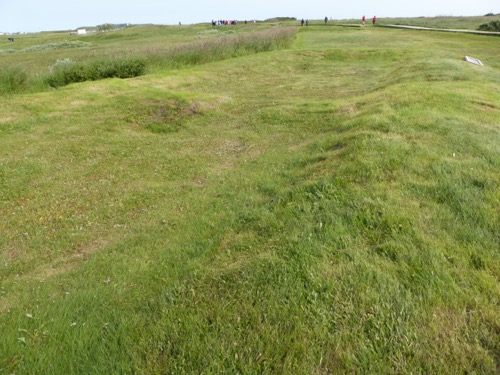


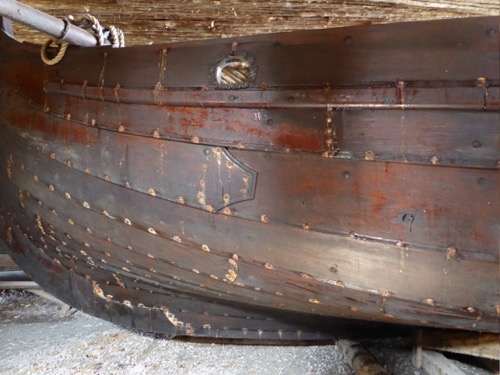

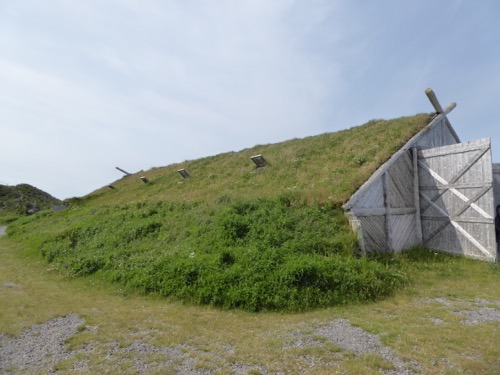

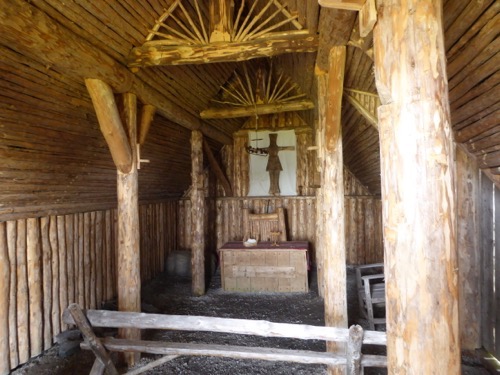
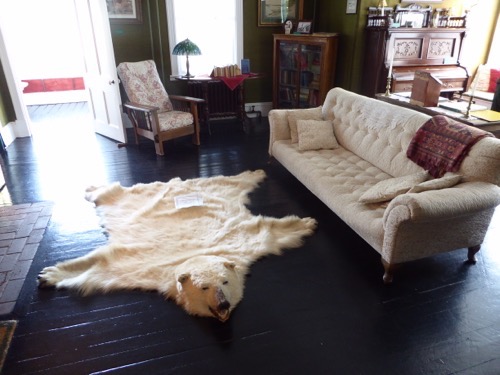
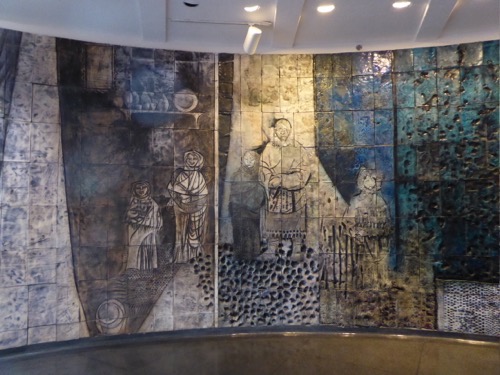
No comments:
Post a Comment